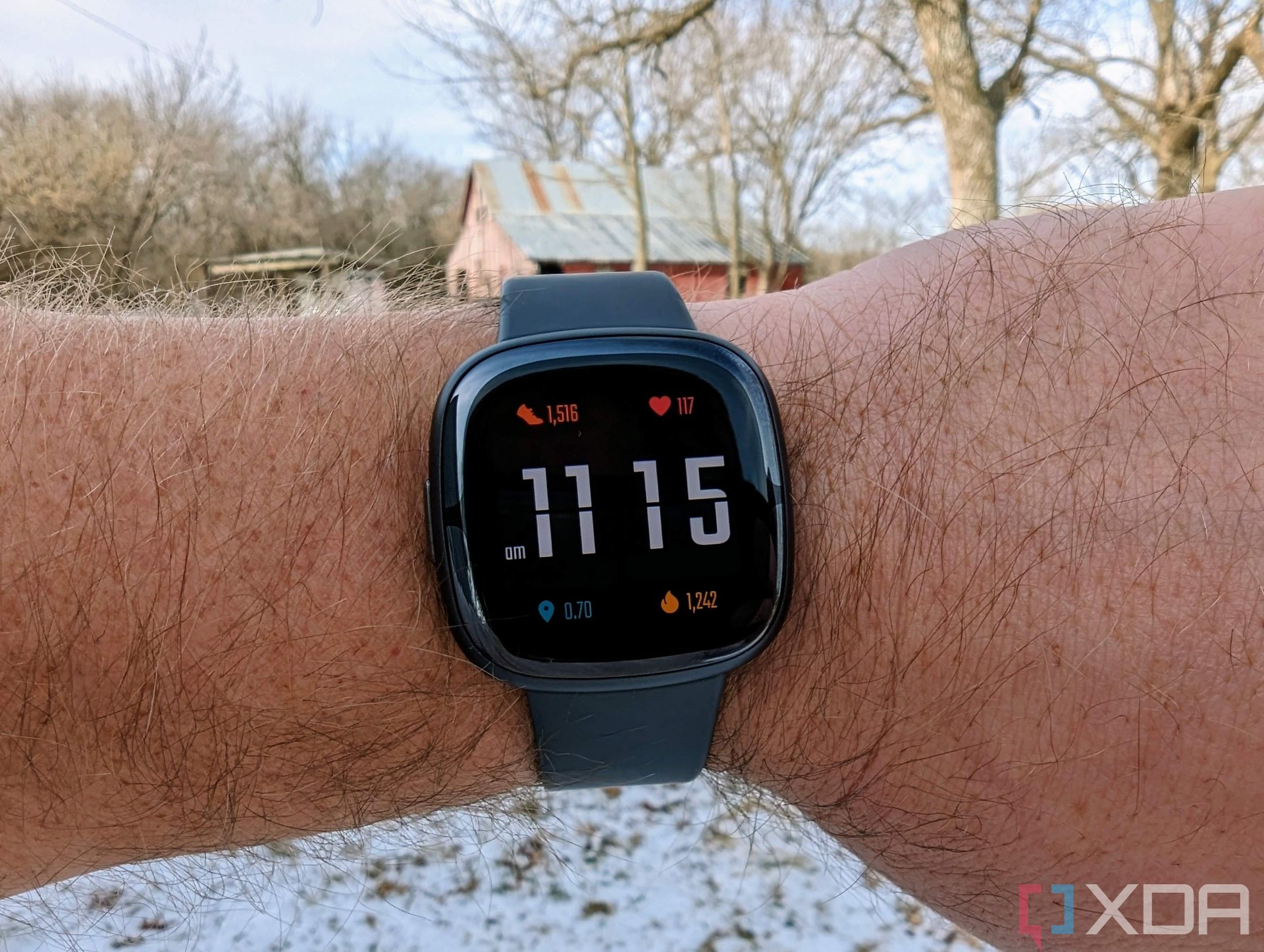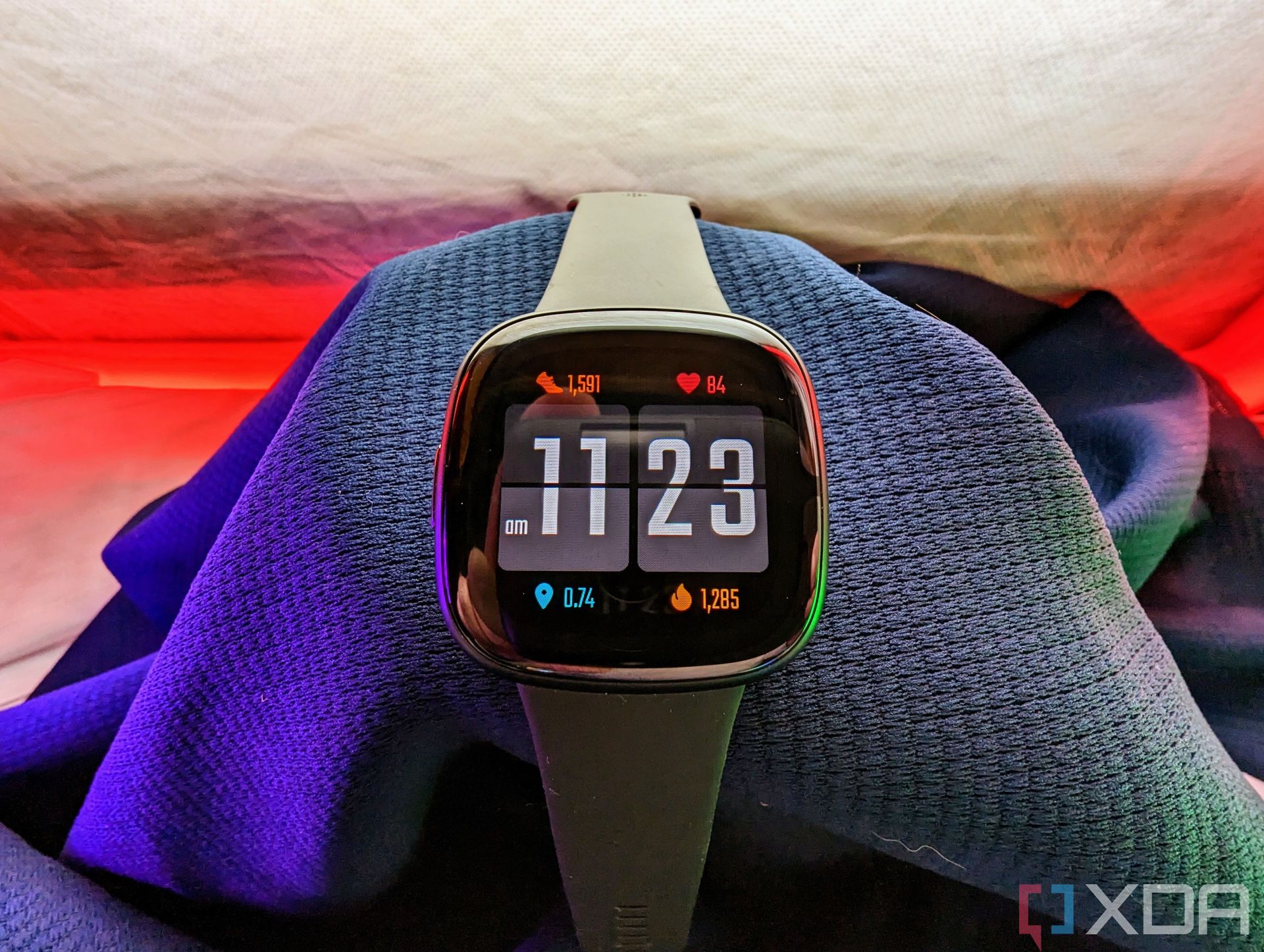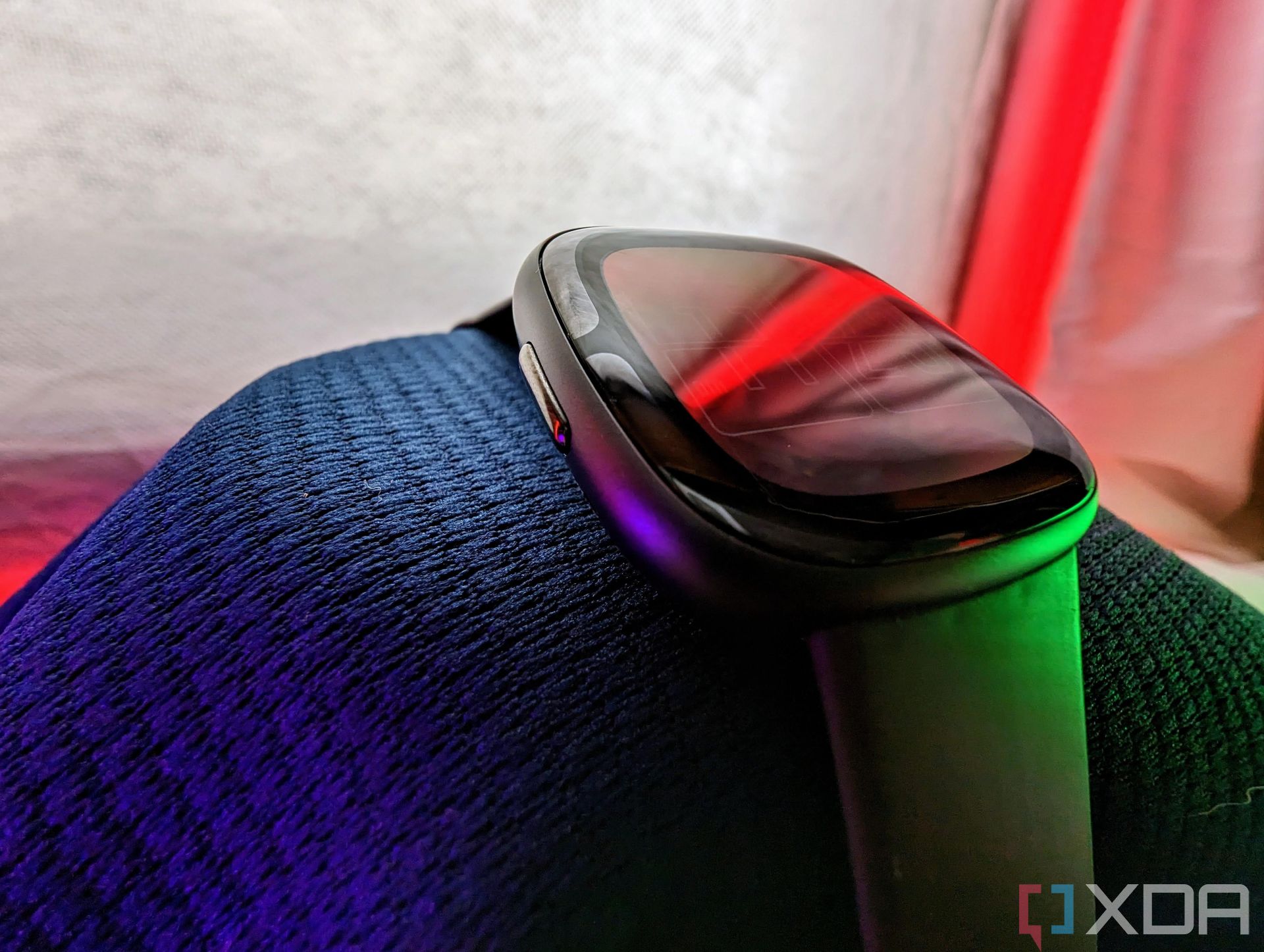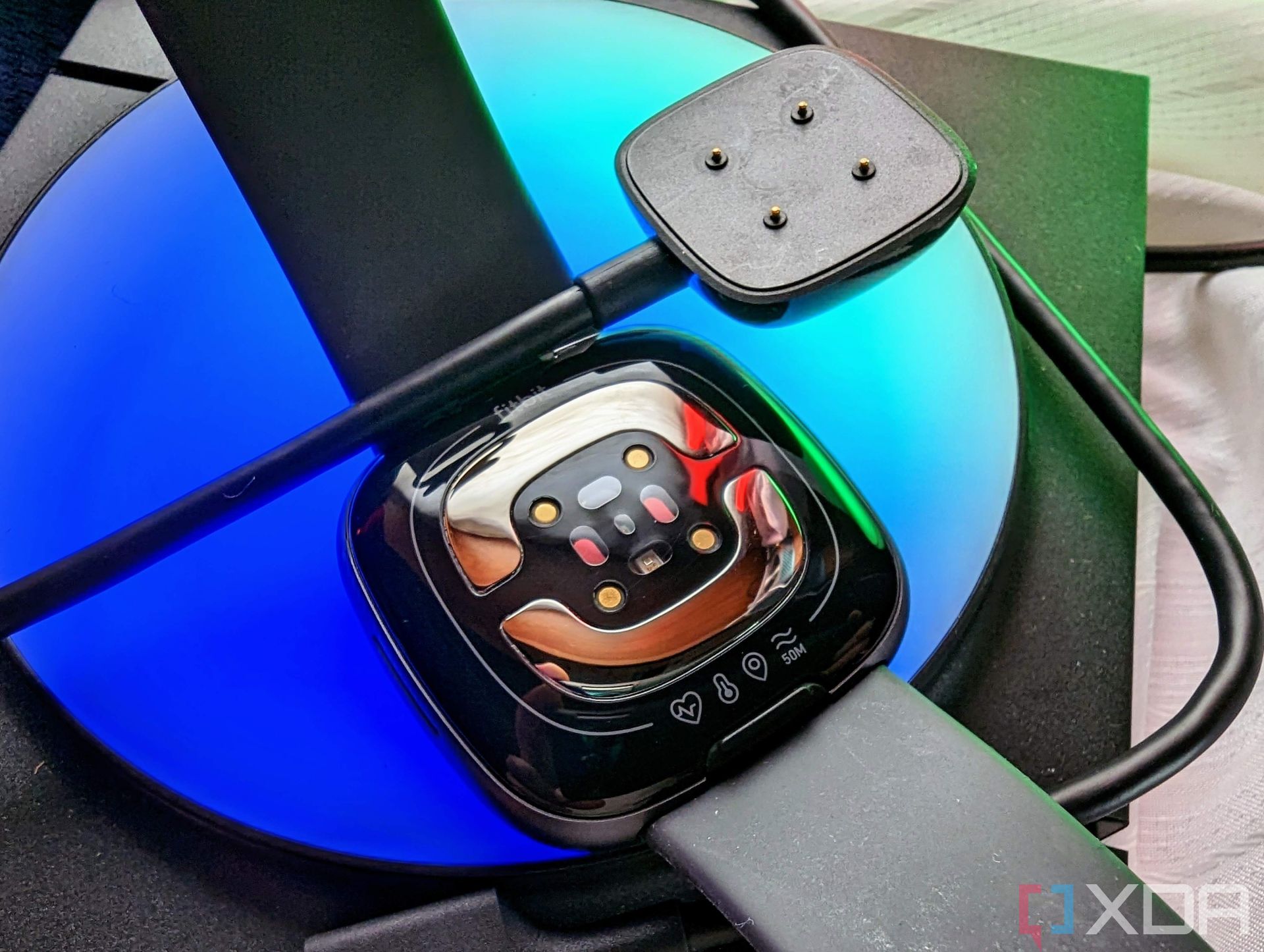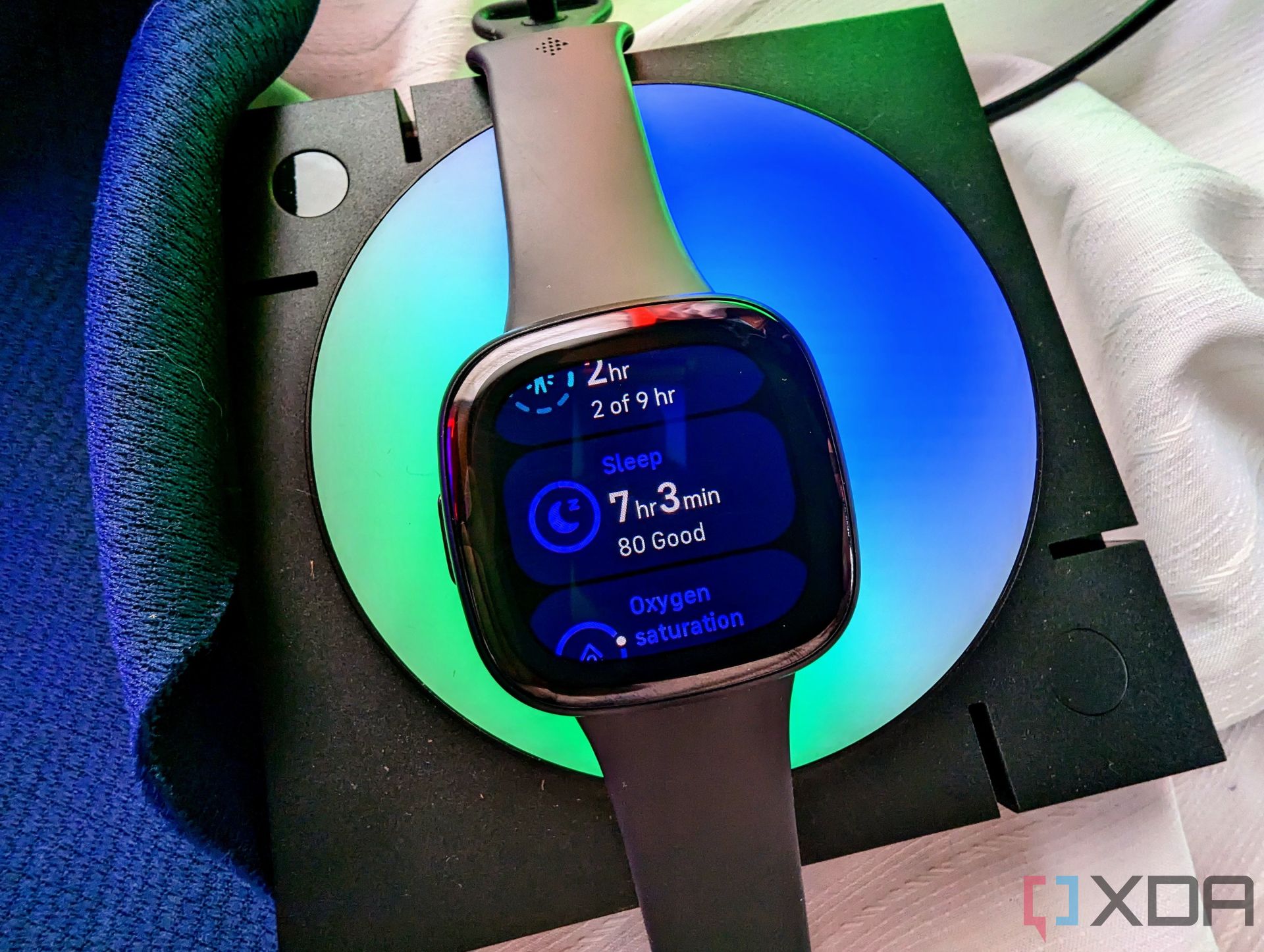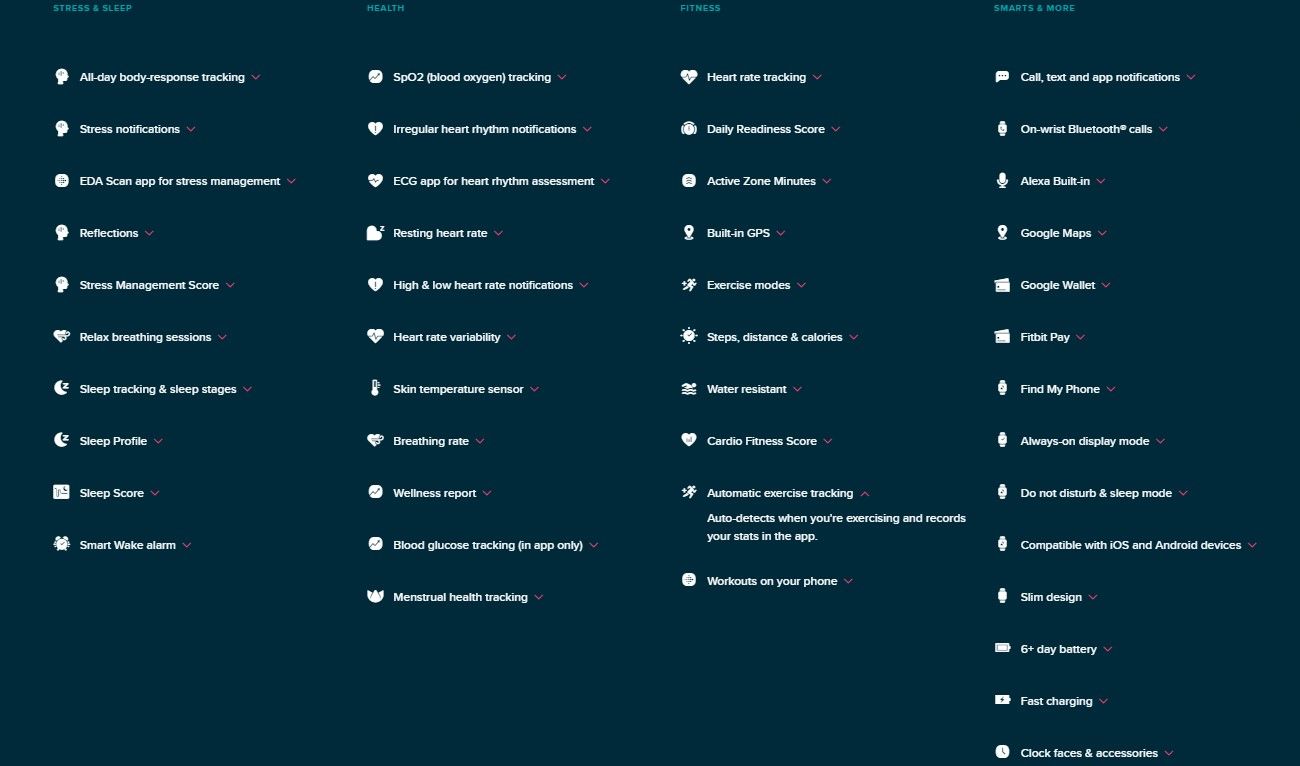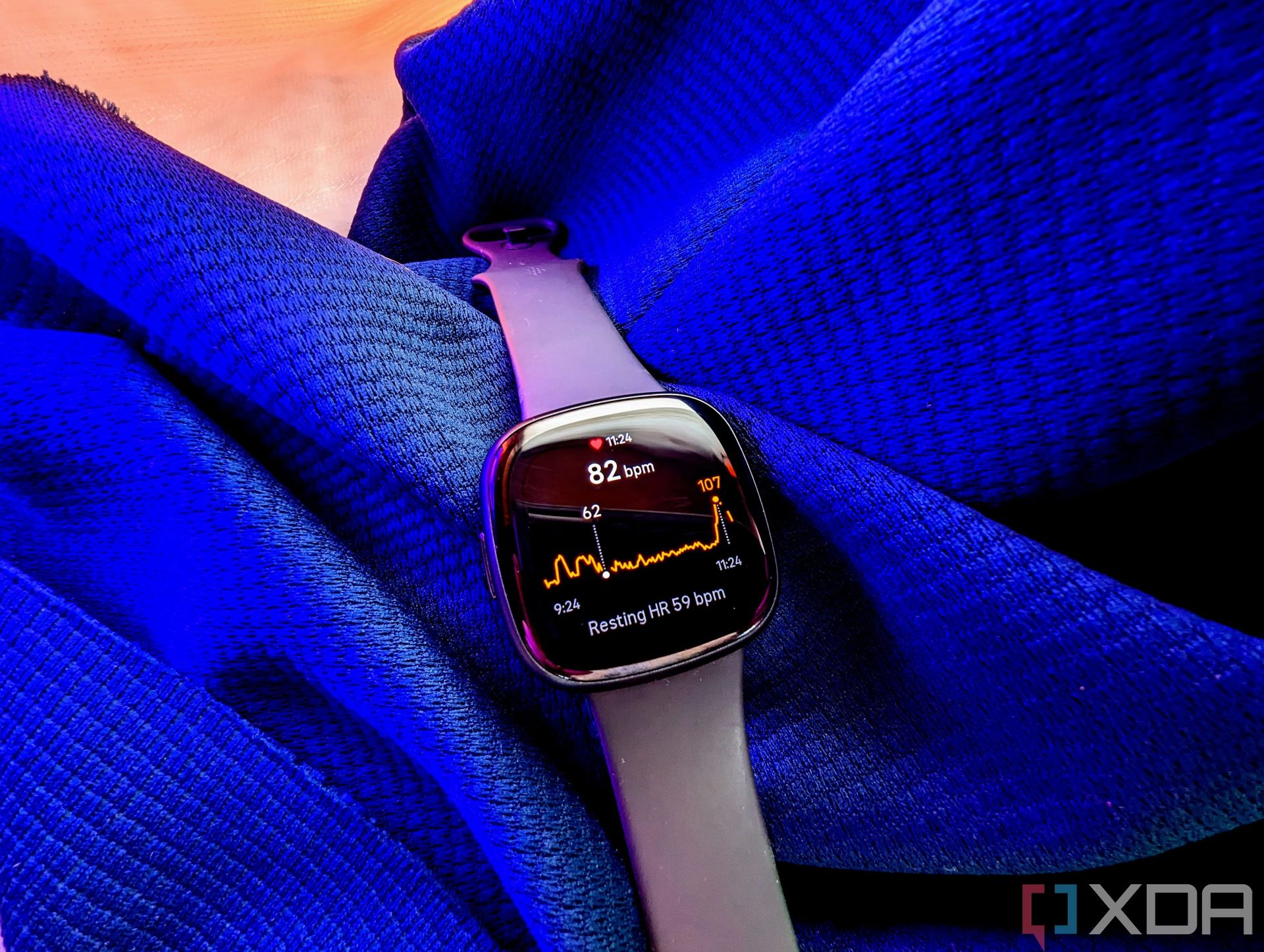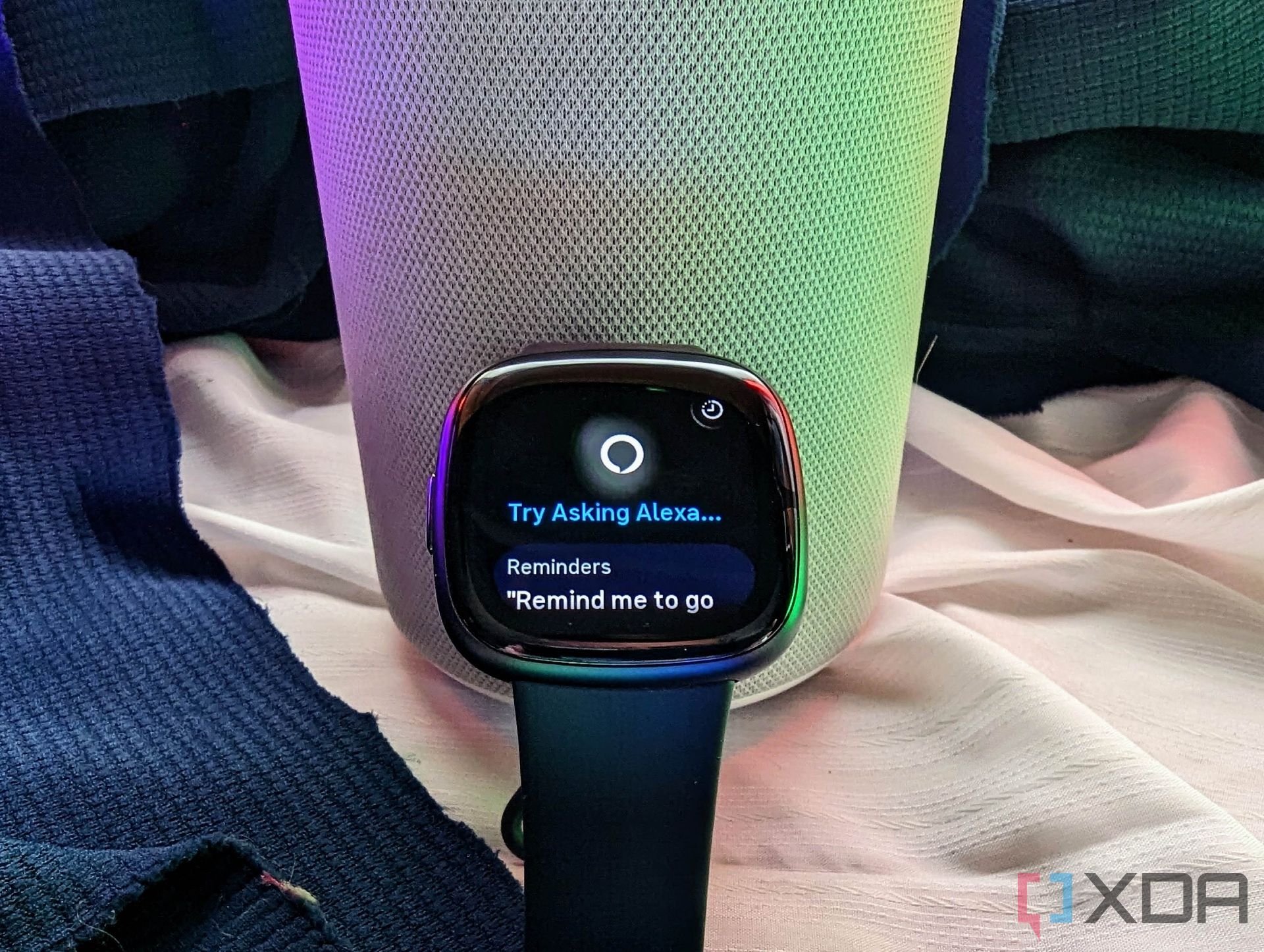Fitbit is one of the most well-known brands when it comes to fitness and health-related wearables — and it has been for years. Google purchased Fitbit back in 2019, though it wasn't finalized until 2021, and had stated that Fitbit would release a Wear OS watch. The Fitbit Sense 2 is the latest smartwatch from the brand, and it doesn't run Wear OS. Instead, it uses a refreshed version of Fitbit OS. Though I've never owned a Fitbit, I have preferred a more complete smartwatch experience that includes an expansive app catalog that coordinates with my smartphone. But the Sense 2 is an intriguing device that offers shades of a Wear OS device but with better battery life, dedicated fitness features, and a large community of fellow Fitbit users.
So, after a week of using the device, will it permanently pull me away from my beloved smartwatches? No. But that doesn't mean it is a failure of the Sense 2, at least not entirely. While the device does have some stutters in performance, lacks some app integrations I enjoy from Wear OS, and is missing Google Assistant, it is a solid fitness tracker that can be the perfect health and fitness companion for some. But it likely isn't going to win over a smartwatch fan.
Fitbit Sense 2
Fitbit's Sense 2 is an impressive wearable that offers helpful insight into your health and activity. Its slim profile and light weight make it comfortable to wear for long periods. Which are possible thanks to a battery that can last up to six days. The performance is just 'OK,' and it's lacking true smartwatch features that put the Sense 2 in a strange place among other wearables.
- Notification Support
- Google Maps (iOS in Spring 2023)
- Battery Life
- 6+ days
- Operating System
- Fitbit OS
- Onboard GPS
- ✔️
- Offline Media Storage
- 🚫
- Customizable Strap
- ✔️
- Case Material
- Aluminum
- Smartphone Music Control
- 🚫
- Colors
- Shadow Grey / Graphite, Lunar White / Platinum, Blue Mist / Soft Gold
- Display
- 1.58-inches, AMOLED
- Connectivity
- NFC (Fitbit Pay/Google Wallet), Bluetooth, Wi-Fi (deactivated)
- Health sensors
- GPS/GLONASS/, HRM, altimeter, skin-temperature, gyroscope, accelerometer, ambient light, SpO2, cEDA
- Strap
- 24mm replaceable using proprietary connection
- Dimensions
- 40.5 x 40.5 x 11.2mm
- Weight
- 37.64 grams
- Audio
- Built-in speaker and microphone
- Mobile payments
- Fitbit Pay and Google Wallet
- Workout detection
- ✔️
- Exercise modes
- Fitbit free: 40 modes, Fitbit Premium: 200+ workouts and 200+ mindfulness sessions
Pros | Cons |
|---|---|
Lightweight and comfortable to wear | Many of the more advanced health and fitness features require a subscription |
Good battery life | Speaker is not very good |
A fantastic suite of health and fitness features | Google Maps isn't available on iOS until Spring 2023 |
Google Maps and Google Wallet are available | No Google Assistant |
Amazon Alexa is onboard | No music controls |
Easy-to-use UI | Wi-Fi is available but disabled |
Fitbit Sense 2: Price and availability
- The full retail price of the Fitbit Sense 2 is $299.95
Fitbit announced the Sense 2 in August 2022, with the release following up in September 2022. The wearable launched with a $299.95 price tag but has seen a few sales since dropping it to $199.95 at many retailers like Best Buy, Target, Fitbit, and more. You can find the Sense 2 in three color options — Shadow Grey band with Graphite Aluminum case, Lunar White band with Platinum Aluminum case, and Blue Mist band with Soft Gold Aluminum case, all in a single case size.
Fitbit Sense 2: Design
- The Fitbit Sense 2 uses aluminum for the watch case instead of the stainless steel from the previous model
- Wearing the Sense 2 is comfortable for long periods thanks to the low profile and lightweight
- There is a multitude of health sensors, including heart rate, ECG, EDA, bloody oxygen, and temperature
In its second iteration, the Fitbit Sense 2 refines the design of the first edition of the wearable and aims to stay in the race for the best fitness trackers available. The case is more rounded and introduces a physical button on the left side of the device in favor of the capacitive button found on the original. Another change to the case is the material it's made from. The original Sense was offered in stainless steel, whereas the Sense 2 opts for aluminum. While this change reduces the device's overall weight and theoretically cost, the price isn't much reflecting that. It also makes the case less durable.
Overall the Sense 2 has a very low profile that makes it comfortable to wear for long periods, including during the night when tracking your sleep. In the box, you get two different size straps, small and large, to accommodate different-sized wrists. The band attaches to the Sense 2 with proprietary, quick-release clips. But there are a lot of great options for replacements, both from Fitbit and third parties.
As for the display, it is a vibrant 1.58-inch AMOLED screen that does a pretty good job of staying visible in bright environments. There is an ambient light sensor to adjust the brightness levels automatically, but you can use the quick toggle to make adjustments if you want quickly. When looking at the display, you can see what looks like antenna bands around the screen. These are sensors for taking an electrocardiogram (ECG) and electrodermal activity (EDA) readings.
If you're unfamiliar, ECG is a test to help detect irregular heart rhythms and atrial fibrillation (AFib), and according to Fitbit, an EDA scan "tracks changes in heart rate and electrodermal responses—tiny electrical changes on your skin—so you can see how your body responds during mindfulness sessions." These scans, along with heart rate, blood oxygen saturation, and tracking changes in your skin's surface temperature, work together in order to provide a more complete view of your health.
Battery life
- Battery life is rated for 6+ days but with all forms of health monitoring enabled, the battery only lasted about three days.
If there is one area that fitness trackers have been able to beat even the best smartwatches consistently is in battery life. Fitbit claims the Sense 2 is rated for six-plus days of use between charges. With all the health tracking features enabled, always-on display, sleep tracking, and taking periodic ECG and EDA readings, I consistently got about three and a half days before needing to charge the watch. While that is still better than many of the smartwatches on the market, aside from maybe the TicWatch Pro 3 Ultra, it isn't quite what I was hoping for. When it is time to recharge the Sense 2, you'll use the USB-A to magnetic POGO pin charger that connects to the device's back. Again, according to Fitbit, you'll get a day's worth of battery in just twelve minutes of charging. I managed to go from 20% to 35% in sixteen minutes and 100% in just over an hour. Not too bad, but also not great, considering the Google Pixel Watch will get you from zero to 50% in about 30 minutes.
Software
- Fitbit's refreshed Fitbit OS is clean and easy to learn
- Android users have access to Google Wallet and Google Maps, but iOS users won't get Google Maps until Spring 2023
- Notification replies are limited to Android users
- Sometimes the UI would be sluggish to respond to interactions
As always, the Sense 2 runs Fitbit OS, but the latest version includes some Google apps like Wallet and Maps. However, at the time of publication, Google Maps is only available for those pairing the device to an Android phone — iOS users will gain access in Spring 2024.
Navigating the interface is similar to Wear OS watches with a swipe down offering quick toggles, swiping up shows you any notifications, swiping left or right lets you view your tiles for a quick glance at your stats, and finally, pressing the physical button brings up your app list. While I'd like the option of Google Assistant access on the Fitbit Sense 2, especially with Google owning Fitbit and all, instead, we have Amazon Alexa on the device. You can access the digital assistant either by opening the app or setting it to a long-press using the button on the side. A double press will bring up a shortcut to your favorite four apps.
I generally enjoyed the software experience on the Sense 2. As I mentioned before, I've never been drawn to fitness trackers, even those claiming to be a smartwatch, because I want to have access to some apps and the ability to act on notifications if I choose to. That's all been possible on the Sense 2, well, most of it. The essential apps I would want are available, and on Android, I can respond to messages that come in with either a quick response, emoji, or by voice.
One of the areas that Fitbit has always done a good job at is encouraging community. Because Fitbit has been around for so long and has been quite popular, there are a lot of people using these devices. This, combined with Fitbit leaning into the idea of competition and sharing progress in the app, you can connect with friends and like-minded folks to help encourage each other to reach your goals. You can compete in weekly step goals, virtual fitness events, and more all by simply wearing your Sense 2 and joining others in the Fitbit app.
All the health and fitness readings automatically sync back to the Fitbit app on your smartphone. Then, depending on whether you are using the free version or paying for a Fitbit Premium subscription, you'll get varying levels of insight as to the data your Sense 2 is gathering for you.
For example, Fitbit recently added Sleep Profiles for Premium subscribers that give more in-depth info on your sleep patterns and assigns an animal to represent your sleep style. But you also get a Readiness Score, Wellness reports, advanced skin temperature details, and more. It even expands the number of trackable workouts from around 40 to over 200 types, along with more than 200 mindfulness sessions. Fitbit Premium is $9.99/month or $79.99/year. But you can get a 90-day free trial to test out the service to decide if the added features are worth it for you.
Fitbit has done a good job of making the interface easy to use and the health information digestible. Viewing it on the watch itself is easy, but to get the full breadth of the data, the Fitbit app is the way to go. Each section in the app is expandable to show you more information that is accompanied by an explanation of what it means.
While it isn't difficult to get around the Sense 2's software, there were numerous times when swiping between screens or opening an app would be sluggish or take multiple tries to get the watch to respond. I don't know if this is due to a software glitch or the hardware in the Sense 2 not being powerful enough to keep up. It wasn't unusable, but it is worth knowing as the device does cost a pretty penny.
Fitbit Sense 2: Should you buy it?
Buy the Fitbit Sense 2 if:
- You want a fitness-focused smartwatch.
- You want multi-day battery life from a watch that isn't bulky.
- You want access to Google Maps, Google Wallet, and Amazon Alexa from your wrist.
- You want to be part of like-minded people with similar health and fitness goals.
Don't buy the Fitbit Sense 2 if:
- You need your watch to last more than a week between charges.
- You want Google Maps access now, and you are an iOS user.
- You use iOS and want to respond to messages.
- You want Google Assistant on your wrist.
For a person that has long preferred smartwatches to fitness trackers, the Fitbit Sense 2 is a great device to bridge that gap. It definitely leans more fitness tracker than a smartwatch, but the Sense 2 offers enough features that it can provide a similar experience and some improvements over other smartwatches. Things like deeper health and fitness insights thanks to not only more sensors but the long-history Fitbit has in the wearable space. You also get longer battery life than many other smartwatches.
But if you are a "power smartwatch user," then you'll likely be feeling like you're missing out on some features. The list of apps you can download to the Sense 2 is very short, and some that are available don't work equally with iOS and Android. Even the seemingly basic ability to respond to a message is missing for iOS users. The same goes for watch faces. While there are quite a few available, there aren't nearly as many as Wear OS users have access to.
In the end, I've very much enjoyed my time using the Fitbit Sense 2. Do I sometimes feel like it's missing something — yes. But I don't really know what. Is it going to keep me from recommending it or using it — no. That is unless you have specific requirements for your wearables that just aren't possible on the Sense 2. So, if you want a smartwatch-like fitness tracker with an excellent suite of health features and a vibrant community of users, I think you'll be quite happy with this device.

